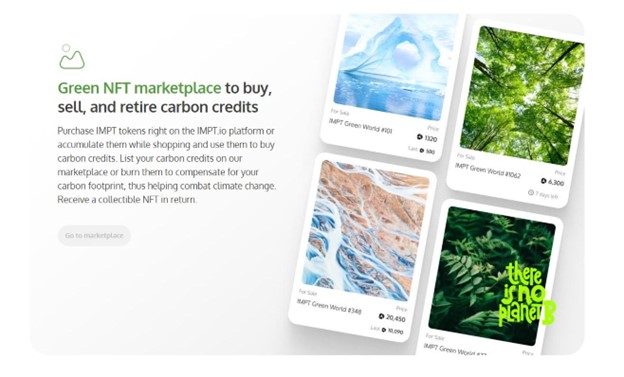If you’ve been keeping up with the cryptocurrency world, you’ve probably come across the term “NFT.” NFTs are one-of-a-kind, non-interchangeable digital assets that also serve as valid proof of ownership on the blockchain. NFTs have made the prospect of digital collectibles a reality and are being hailed as the answer to physical collectibles in various circles. The concept of NFTs has existed since 2012, with the idea based on Vitalik Buterin’s Colored Coins project. Still, the idea of NFTs did not take flight until October 2017, with the introduction of crypto kitties and creating a lot of millionaires. The next wave of NFTs would arrive in 2020, with the launch of NBA Topshot, a marketplace where users can trade NBA and WNBA digital collectibles.
As we can see, NFTs have a long history, and unlike their first mainstream appearance in 2017, NFTs are here to stay, with new NFT projects entering the market daily and an unprecedented amount of user growth. The NFT industry is evolving at an alarming rate, from static images to a slew of multimedia assets. We are gradually moving away from static images and multimedia assets and toward interactive assets as we transition to a new era of NFTs. The NFT industry has mainly been thriving, with the highest-ever NFT sale going for as much as $69.3 million. This article will examine utility NFTs, also known as NFTs 2.0, and how they transform the NFT industry.
The Rise of Utility NFTs
Utility NFTs are NFTs with valuations based on the access, perks, and opportunities they provide to token holders. Utility NFTs are NFTs that offer clearly defined intrinsic value in addition to the usual scarcity associated with NFTs. We are still in the early stages of utility NFTs, and it provides value accrual for NFT technology as a whole, with limitless opportunities for NFT creators with vision. Utility NFTs are broadly classified into the following categories:
- Community NFTs
- Fantasy Sports NFTs
- Gambling NFTs
- In-game NFTs
- Social NFTs
Utility NFTs or NFTs 2.0 are the future, based on user demand, and offer a broader range of practical NFT applications. Holding a utility NFT, for example, can grant access to exclusive experiences, early access to products, airdrops, exclusive invites to events with top celebrities/athletes, and much more.
Utility NFTs in the Gambling Industry
When it comes to the gambling industry, blockchain technology adoption is few and far between, as the industry is still primarily run using traditional gambling methods. However, some new players have been attempting to incorporate blockchain technology into the gambling industry, Sloties.
Sloties are over ten thousand uniquely generated NFTs on the Ethereum blockchain, with the primary goal of providing utility in the gambling industry. Sloties are based on the ERC-721 standard, which underpins digital collectibles and most other utility NFTs. The recent NFT craze has steered users toward NFT-based slot machines, where you win NFTs rather than cash. Slotie’s slot machines allow slotie holders to become shareholders of the in-house casino and earn fantastic rewards. Sloties intends to build a completely transparent DeFi platform for its casinos, where the slotie community can invest assets and earn rewards. NFT holders earn rewards every time they spin a slot machine in any of the Slotie casinos. Slotie NFT holders can also use their Sloties to play the slot machines and earn rewards. Sloties’ introduction into the gambling industry demonstrates how far NFT technology has advanced and that utility NFTs are becoming the norm.
Sloties’ incentive-based model appears to be very promising as a measure to maintain holding culture and generate passive income streams, driving additional value and increasing demand for Sloties NFTs, one of the critical elements to being a successful NFT collection.
What makes Slotie NFT Unique?
Staking
Slotie began developing a platform that is an entirely transparent DeFi ecosystem for casinos, where the Slotie community can invest their assets, become a house, and earn high APRs. You can invest Slotie NFT or any other NFT in slot machines. Slotie NFT holders earn rewards every time they spin the slot machine at any of our partner casinos.
Passive income
Holding Slotie can be thought of as a partnership agreement between holders and casinos.
Casinos pay a commission of 12% of slot machine revenue for executing and distributing high-quality gaming solutions. Monthly, Slotie distributes 50% of the revenue generated by NFT-based slot machines to Slotie owners.
In the Slotie ecosystem, Passive Income serves a specific purpose. It’s not just a bold promise; it’s a genuine incentive for Slotie owners to keep their NFTs in the long run. In addition, holding Sloties is critical to the business model we’re developing with our partner casinos.
Breeding
Not only cats but also machines can breed in the NFT world.
The demand for DeFi gambling, specifically NFT slot games, is expected to skyrocket over the next two years. So naturally, this will create a need for additional NFT suppliers, and this is where the breeding comes in.
Slotie owners can breed their Sloties to create Junior Sloties, a new series of NFTs. Junior Sloties will have the same capabilities as Sloties. However, a new series of slot machines will be developed for Junior Sloties and integrated into the partner casino ecosystem. By owning Junior Sloties, you will be able to integrate your NFTs into slot machines, receive a profit share, and earn passive income from our revenue share.
When demand increases and NFT slot machines are integrated into many casinos, breeding and owning Junior Sloties doubles the Slotie holder’s profit.
Conclusion
Utility NFTs are without a doubt the future of NFT technology, with NFTs demonstrating the amount of innovation possible with blockchain technology through use cases such as Sloties. The introduction of Sloties could signal the start of a paradigm shift in the gambling industry landscape as we strive for a more decentralized future.











